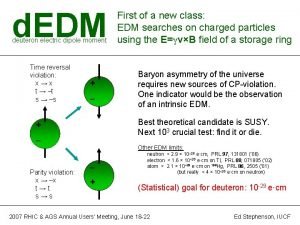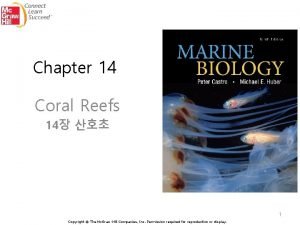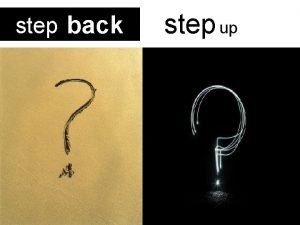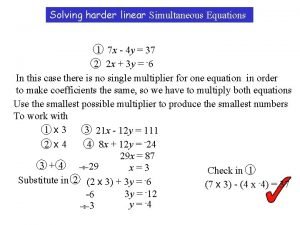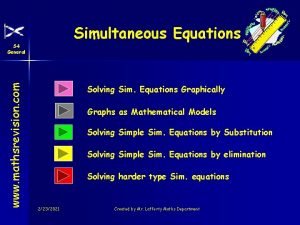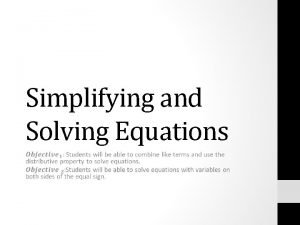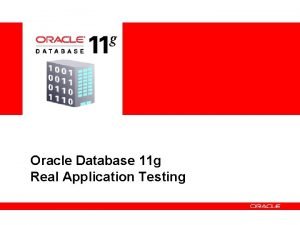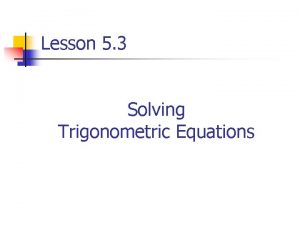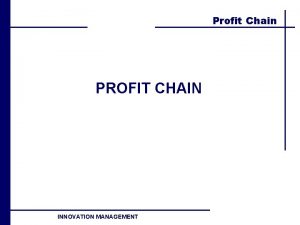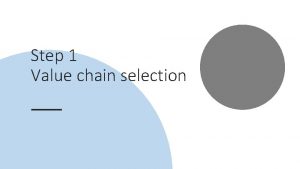ProtonProton Chain Step 1 Formation of deuteron p



















- Slides: 19

Proton-Proton Chain: Step #1 Formation of “deuteron”, p + p d + e+ + slow weak interaction.

Proton-Proton Chain: Step #2 Formation of “Helium-3” p + d 3 He + Rapid, radiative association.

Proton-Proton Chain: 3 He Step #3 Formation of “Helium-4” + 3 He 4 He + p Medium time scale.

Proton-Proton Chain: Positrons annihilate with free electrons. Resulting gamma-rays are absorbed locally together with gamma-rays produced in step #2. Neutrinos escape the Sun directly. Prediction! Sun is a source of neutrinos.

Coulomb Barrier: -2. 2 r. N 0. 001 r. C

Quantum Mechanical Barrier Penetration:

Fusion Window:

Standard Solar Model:

Standard Solar Model:

Standard Solar Model:

Standard Solar Model: Half way to a helium core!

Standard Solar Model:

Carbon-Nitrogen-Oxygen (CNO) cycle: net effect 4 p 4 He “catalysis” p + + 1. 99 13 C + e + + e 1. 71 14 N + 7. 55 14 N 15 O + 7. 29 15 O 15 N + e + + e 2. 22 15 N 12 C + 4. 97 12 C 13 N p + 13 C p + Me. V 13 N 4 He 25. 7 Positrons annihilate with free electrons, so add 2 x 0. 511 = 1. 02 Neutrinos carry away 0. 7 and 1, so subtract 1. 7. TOTAL = 25 Me. V per cycle

Proton-Proton versus CNO cycle: CNO begins to dominate energy production for M > 1. 3 M The much greater temperature sensitivity of the CNO cycle enables the much higher luminosities of massive stars (recall L ~ M 3).

Binding Energy per Nucleon in Atomic Nuclei: “iron peak” 9 Be

Triple alpha reaction: Enables a fusion jump from helium to carbon. 4 He + 4 He 8 Be However, + 8 Be 4 He + 4 He in 2. 6 x 10 -16 s At high temperatures (T>108 K) enough 8 Be remains for an occasional 8 Be + 4 He 12 C* + 12 C + Once carbon is produced, elements can be synthesized up to the iron peak if the temperature is high enough to overcome the Coloumb barriers. For example, 4 He etc. + 12 C 16 O +

Nobel Prize in Physics 1967 For his contributions to theory of nuclear reactions, especially his discoveries concerning the energy production is stars. Hans Bethe 1906 -2005

Nobel Prize in Physics 1983 For his theoretical and experimental studies of the nuclear reactions of importance in the formation of the chemical elements in the universe. William A. Fowler 1911 -1995

Nobel Prize in Physics 2002 For pioneering contributions to astrophysics, in particular for the detection of cosmic neutrinos. Raymond David 1914 Masatoshi Koshiba 1926 -
 Step 1 step 2 step 3 step 4
Step 1 step 2 step 3 step 4 Deuteron
Deuteron Food chain food chain food chain
Food chain food chain food chain Formation initiale vs formation continue
Formation initiale vs formation continue Competition in coral reefs
Competition in coral reefs Disking of primary teeth
Disking of primary teeth Creating a dinosaur sculpture step by step
Creating a dinosaur sculpture step by step Informative essay outline
Informative essay outline Steps to writing an argumentative essay
Steps to writing an argumentative essay Step up step back
Step up step back Factoring ways
Factoring ways Linear simultaneous equations
Linear simultaneous equations Simultaneous equations step by step
Simultaneous equations step by step How to combine like terms step by step
How to combine like terms step by step The process of photosynthesis step by step
The process of photosynthesis step by step Bayes filter matlab
Bayes filter matlab Oracle real application testing
Oracle real application testing Bare metal restore netbackup
Bare metal restore netbackup Trig equation solver with steps
Trig equation solver with steps Sophia loren face shape
Sophia loren face shape

